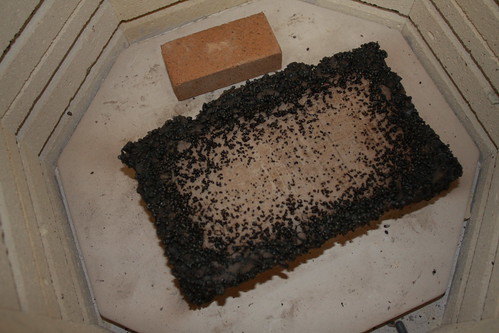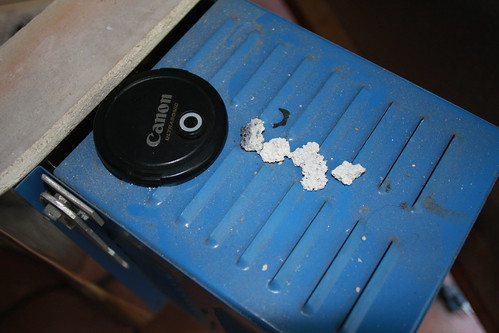ATLAS FOUNDRY COMPANY, INC. Marion, Indiana
July 1996
POLLUTION PREVENTION TECHNOLOGY IMPLEMENTATION REPORT
INTRODUCTION
Atlas Foundry Company and the Indiana Pollution Prevention and Safe Materials Institute (IPPI) have worked together for several years on projects involving routine Community-Right-To-Know and hazardous-chemical-use reporting to the EPA. The company was, thereby, aware that IPPI collaborates with companies throughout the state, including other foundries, to reduce hazardous chemical use and/or emissions. Atlas Foundry made plans to convert from a cupola melting furnace to an electric induction furnace process and, knowing of IPPI's pollution prevention and pollutant emissions reduction work, contacted IPPI with an invitation to review this change of process with regard to hazardous chemical emissions, solid waste reduction and economics.
COMPANY BACKGROUND
Atlas Foundry Company, Inc., which manufactures gray iron castings, is a family-owned business, which was founded in 1893 and is located in Marion, Indiana. They produce a wide variety of castings, usually less than fifty (50) pounds in weight. The company employs 131 people and, in the past, produced in excess of 17,000 tons of iron each year, utilizing a 1940's-vintage cupola melting furnace capable of twelve (12) tons per hour, continuous.
MANUFACTURING PROCESS
Atlas' cupola furnace was typically charged and recharged with a combination of pig iron, steel scrap, iron manganese briquettes, coke, and gray iron waste from prior casting (gates, risers, unacceptable cast parts). The molten gray iron, thus produced, was transferred from the cupola via ladle to a forty (40)-ton storage furnace. From the storage furnace, molten gray iron is transported throughout the facility in small ladles and poured into various sand molds. After a casting has been poured, cooled, and separated from its sand mold, gates, runners, and risers are removed and the casting is placed on a conveyor and transported to a shotblasting area to be cleaned. Following cleaning, the casting is inspected and touched up, as required, to remove excesses at parting lines and so forth. Testing of the 'brinell' hardness level, related to the ultimate strength of material of the casting, determines its acceptance or its return for remelt. A significant quantity of gate and riser material (along with a small percentage of imperfect castings) provides a remelt factor of approximately 40% of the total cast material. Viewed from the contrasting perspective, 60% of the gray iron produced is in the form of product, and the balance is recycled as a natural part of the process.
ENVIRONMENTAL ISSUES
The foundry industry has historically been characterized by large quantities of emissions and waste residues. This has been the case for the primary processing/refining of raw ore as well as the secondary production of metals such as gray iron castings. In this secondary metallurgical process, the major air contaminants occur as metallic fumes, smoke, and dust. Significant amounts of landfill waste are also generated as expended sand, sludge, slag, baghouse dust, etc.
Cupola-type furnaces use coke as a fuel. Iron is melted by the burning of coke and flows down the cupola. As melting proceeds, new material is added at the top. Added flux combines with nonmetallic impurities in the iron to form slag, which is lighter than molten iron and separates. Both the molten iron and the slag are removed at the bottom of the cupola. Sand is used as a refractory lining in the cupola and must be dropped at the end of each day's cupola operation. This is not a reusable waste (cupola drop).
Complete conversion of carbon that is present in the coke (producing 100% carbon dioxide [CO2]) in cupola melting is undesirable. Highly efficient fuel burning would result in oxidation of the iron as it is melted and runs down through the cupola stack. Such oxidation is minimized by assuring the presence of carbon monoxide (CO). During the iron's descent, it is in direct contact with the offtake gas, which purposely is oxygen poor (about 11% CO content). This minimizes the oxidation of iron but results in less efficient use of the available energy from the coke and, also, in the release of copious amounts of CO gas emissions to the environment.
The cupola process inherently produces a significant amount of particulate emissions. A high energy scrubber unit had been part of the structure since 1987. Ninety-nine percent (99%) of the particulate generated was directed to this scrubber, of which 95% was removed from the final cupola stack emissions. The resulting scrubber sludge is a landfill waste.
Although the basic pig iron used in the process contains no lead, scrap iron used as a part of the process is generally thought to occasionally contain some small level of this element. When it is present, some portion of it invariably will become a part of the emissions scenario.
Gray iron, by design, contains an EPA-reportable, heavy metal ingredient--Manganese (Mn). In 1995, the gray iron manufacturing operation resulted in a reported release of almost 10,000 pounds of this material to landfills or in air emissions.
P2 PROJECT
Atlas Foundry Company established a project to replace the cupola furnace with two, four-metric-ton, batch-load, electric coreless induction furnaces. This type of furnace produces substantially lesser amounts of environmental pollutants. The electric induction furnaces are cylindrical or cup-shaped, refractory-lined vessels that are surrounded by electrical coils. A 2500 KW, 200-300 Hz, power module energizes the coils, producing a fluctuating electromagnetic field which heats the metal charge. Typically, they are kept closed-- except when charging, skimming, or removing the molten metal, which is accomplished by tilting the unit hydraulically.
These new furnaces are located in close proximity to the 40-ton holding furnace. A cold batch of material is loaded and full power applied. As melting proceeds, additional material is added until full charge is reached. When the complete charge is melted, the furnace is slagged, temperature and chemical composition are checked and adjusted, the furnace is slagged-off, its temperature is raised to 2750 degrees F, and the material is transferred to the holding furnace. A 25,000 cfm dust and fume collection hood system over the furnaces collects and filters out particulate and fume emissions. This type of furnace uses no coke, produces no CO emissions, and, therefore, achieves an immediate and significant pollutant reduction. Although some form of energy conversion must take place elsewhere to produce the electric power required, unlike the cupola, there is no purposeful production of CO rather than CO2 in power generation operations. The CO reduction at Atlas is truly a reduction--not a transfer. There is no cupola drop, at the end of each day, producing air emissions and related landfill waste. There is, however, the need to periodically dispose of spent furnace lining material. Slag production is greatly reduced because the basic charge is much cleaner. There is no cupola scrubber sludge to be disposed of at a landfill although a much lesser amount of dry baghouse dust does require disposal.
Reduction of the above wastes and related particulate emissions have a direct, positive effect in reducing the amount of manganese (Mn) released by the operations.
The incorporation of these furnaces will allow for easier, future expansion of the range of iron alloys produced. Some of these would conceivably contain chromium. On a "what-if" basis, these furnaces would provide the same percentage reduction in emissions of chromium as achieved on manganese when compared to cupola production.
POTENTIAL ENVIRONMENTAL AND COST BENEFITS
First and foremost, a recalculation of 1995 Form R data, using the latest available input for the cupola operation and comparing to the values for an electric induction furnace, yields a 53.2% reduction in releases of manganese, overall. Releases to the air are reduced more than 25% and landfill input is reduced by 59%.
The furnace related operations are only a portion of the total source of landfill wastes and air emissions at Atlas (or any other foundry), but, the other sources (such as shakeout to remove castings from the sand molds) did not change as a result of this project. Only the environmental emissions and wastes associated with this project are covered in the following summary:
Calculations based upon the comparison table reveal:
Furnace related pollutants have been reduced 99.5%.
Furnace related landfill waste has been reduced 92.1%.
A cost comparison made by Atlas Foundry indicates $49.98 - 43.08 = $6.90 per melted ton reduction in related operating costs. At the 1995 annual melt rate of 18,273 tons, the savings produced is $126,084 annually.
Various sources of economic assistance have been available, such as local economic revitalization capital investment tax abatement, a low cost economic incentive loan, and power usage discounts, which help to reduce the payback of approximately $1.25 million outlay to an acceptable level. Flux materials are added that combine with nonmetallic impurities to form slag which, being lighter (less dense) than the molten metal, separates from the metal.
(c) Purdue University Research Foundation, 1996
 So, what really happened? This is a close up of the side of the test block. I originally thought, as I posted, that the seeds had popped. Nope. It looks like as they got to the temp where the oil started to plasticize and char. Then it began to expand and ooze out of the pores and cracks. Obviously it did not all ooze out so it broke the clay apart.
So, what really happened? This is a close up of the side of the test block. I originally thought, as I posted, that the seeds had popped. Nope. It looks like as they got to the temp where the oil started to plasticize and char. Then it began to expand and ooze out of the pores and cracks. Obviously it did not all ooze out so it broke the clay apart.






























